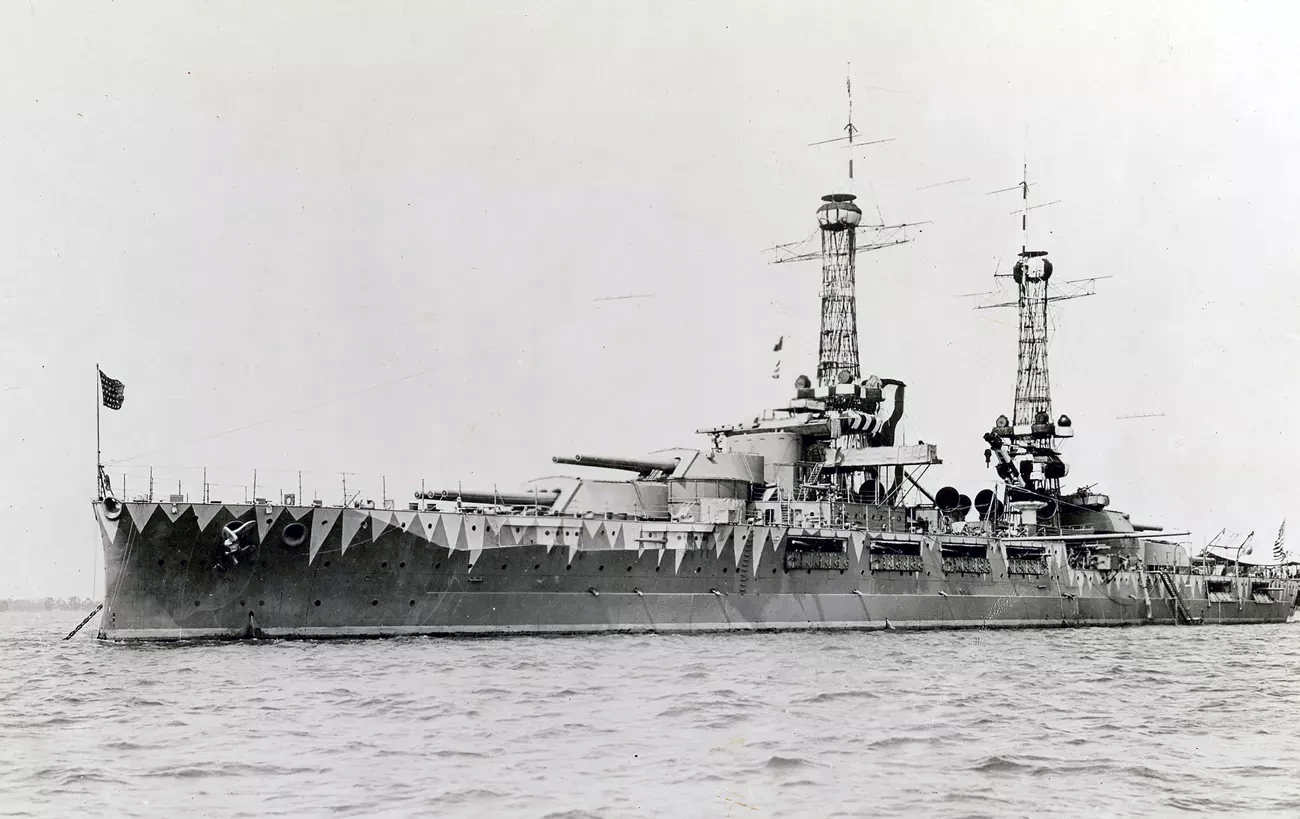
Navy photo/ Public Domain. 
The 37th BattleshipCommissioned in May 1916, the USS Oklahoma (BB-37) was the 37th battleship to enter service with the U.S. Navy. She was a symbol of naval power, representing American strength across the globe during times of both war and peace. From her early days protecting convoys during World War I to her final moments in Pearl Harbor, the Oklahoma's story is one of courage, tragedy, and enduring legacy. Early Service and World War I:After her commissioning, the USS Oklahoma joined the Atlantic Fleet, protecting vital convoys during World War I. Her duties included patrolling the Eastern Seaboard and safeguarding Allied shipments from the threat of German U-boats. The battleship proved instrumental in maintaining the flow of supplies to Europe, serving with honor and distinction during the war. Following the end of the conflict, the Oklahoma continued to project American naval power, cruising the Atlantic, Pacific, and Mediterranean Seas. Her presence in these waters highlighted the U.S. Navy’s expanding global role in the years following World War I. Transition to the Pacific Fleet:In October 1936, the USS Oklahoma was transferred to the Pacific Fleet, signaling a shift in American naval strategy as global tensions increased. The battleship operated out of San Pedro, California, for four years, training and conducting fleet exercises to maintain combat readiness. By December 1940, the USS Oklahoma was stationed at Pearl Harbor, a move that placed her at the heart of American naval operations in the Pacific. The ship’s final mooring occurred on December 5, 1941, just two days before the Japanese attack that would forever change the course of history. 
Pearl Harbor and the Attack:On December 7, 1941, at 7:56 a.m., the Japanese launched a surprise attack on Pearl Harbor, targeting Battleship Row. The USS Oklahoma was struck by as many as nine torpedoes. Within 12 minutes, at 8:08 a.m., the battleship capsized. Hundreds of men were trapped below deck, struggling in the pitch-dark, upside-down compartments as they filled with water. 429 officers, sailors, and Marines lost their lives, marking the second-greatest loss of life at Pearl Harbor after the USS Arizona. Acts of Heroism:Despite the chaos, moments of extraordinary heroism emerged. Some of the crew managed to escape the capsized battleship, while others waited for rescue. Among the acts of bravery was the escape of three men from compartment D-57, who swam nearly 90 feet through flooded sections of the ship, navigating an upside-down, waterlogged world to reach the surface. Rescue efforts began immediately, and over the next two days, 32 men were saved from the wreckage. Rescuers worked tirelessly, listening for the desperate hammering of trapped sailors as they pounded on the ship’s bulkheads. The survivors’ stories of resilience and courage are a testament to the human spirit in the face of overwhelming adversity. Aftermath and Salvage:In the aftermath of the attack, the USS Oklahoma lay capsized in the shallow waters of Pearl Harbor. By 1943, efforts were underway to salvage the battleship. Using innovative engineering techniques, the Oklahoma was eventually righted, but the damage was too extensive for her to return to service. Decommissioned in September 1944, the Oklahoma was sold for scrap. However, in 1947, while being towed to the West Coast, the ship sank in a storm and was lost to the depths of the Pacific Ocean. Her sinking marked the end of the Oklahoma’s physical journey, but her legacy lived on through the stories of her crew and their bravery. Life Aboard "The Okie"The USS Oklahoma holds a unique place in American naval history. Affectionately called “The Okie” by her crew, she was more than just a ship—she was a community. Life aboard the battleship was like a small town at sea, where the sailors were bound by their shared experiences, friendships, and duty. One of the Oklahoma’s survivors, Stephen Bower Young, vividly recalled his shipmates: “Despite the passage of time, it seems like yesterday. My mind sees clearly the shipmates I knew so well...their talk is animated and they turn in my direction. Then a cloud grows darker and I see those certain few less clearly.” The Oklahoma’s tragic loss at Pearl Harbor remains a powerful reminder of the sacrifices made that day. The courage shown by her crew, both in life and in their final moments, continues to inspire generations. Remembering the Oklahoma’s Crew:In recent years, efforts to identify the remains of the fallen have brought closure to many families. Through the work of the Defense POW/MIA Accounting Agency (DPAA) and modern forensic techniques, over 300 sailors and Marines from the Oklahoma have been identified and returned to their families. This ongoing effort ensures that the sacrifices of the USS Oklahoma’s crew will never be forgotten, and their memory will live on, not only in the history of the U.S. Navy but also in the hearts of the nation they served. |
Last updated: September 20, 2024
